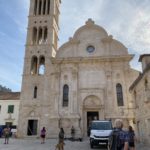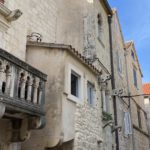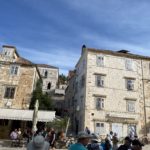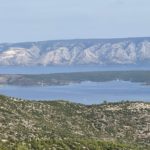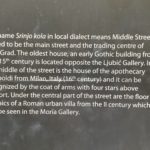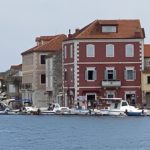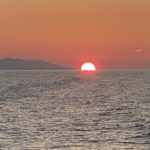
buy gabapentin no prescription Karmen, our tour guide for Hvar Town and Stari Grad. She and her husband farm 4 acres spread over 15 plots and sell essential oils and lavender
http://viningsnaturalhealthcentre.co.uk/tag/personal-development We left Split at 6 am and motored to the island of Hvar where we anchored out in a calm bay. We tendered into shore and met Karmen, our tour guide for the morning. Hvar is viewed by many as one of the jewels of the Adriatic for its mild climate, good beaches, and fields of lavender that bloom in June and July. In the 4th C BC, the Greeks founded Pharos, now Stari Grad and Hiver (now Hvar Town). The Romans, Byzantines, medieval Croatian kings and Venetians have all left their mark here. In the 1880’s Hvar was promoted as a health and wellness resort.
Our tour of Hvar Town included its harbor, one of the most glamorous in the Adriatic. It did not become the main town on the island until 15th century Governors decided its harbor was easier to defend than the one at Stari Grad and ordered all the island’s noble families to move here. Eventually it became one of the most important ports for Venetian fleets trading with the Orient.
The arsenal was built in the late 16th century as a dry dock for Venetian boats. Theater was built above in 1612, one of the oldest in Europe. Karmen recounted how the theater became open to all classes after a rebellion which attempted to reduce the social conflict between the plebes (working class) and the aristocrats. The Cathedral of St Stephen with its 17th century bell tower dominates the north side of the main square. The narrow streets to the right were simple structures that housed the plebes. To the left of this square lived the aristocrats. We saw the Hecktorovic Palace, a unique home that was under construction without a roof for 500 years. It probably deserves a place in the Guiness Book of World Records.
We visited a Benedictine Convent founded in the 17th century home to nuns who make, display, and sell traditional lace made from AGAVE!
On the hill above the town is the 16th century Citadel. Its perch on the hill affords fabulous views of the harbor and the town. We learned that Ivan Vucetic was born in Hvar in 1925. He emigrated to the Argentina in 1882 to become a police officer and changed his name to Juan Vucetich Kovacevich. After dabbling in fingerprint technology, in 1892 he made the first positive identification in a case where Francesca Rosa killed her two children, then cut her own throat, trying to blame an outside attacker. A bloody fingerprint identified her as the attacker. Argrentine police adopted his methods and it spread throughout other police departments.
We boarded a bus and headed out of town checking out vineyards, olive orchards, and lavender fields to Stari Grad, founded in the 4th century and originally called Pharos. Along the way, Karmen told us that she and her husband farm 4 acres with lavender but that it is spread over 15 plots. Water was a direly needed commodity, but it rains only 2 to 7 inches of rain a year. Tito, in an attempt to gain support, or support troops nearby, established a water link for residents. Water is expensive but necessary to grow living things. Farmers also carry cans of water down the hills to their plots to nurture their plants. It takes 40 kilos of lavender flowers for 1 liter of essential lavender oil. Karmen gave etc of us a sachet and a vial of lavender oil.
Stari Grad is at the end of a long bay and is a town of small stone structures and tiny streets. Karmen walked us through the town. We saw the residence of the poet Peter Hektorovic, whose philosophy was leading edge for his time. He hoped to create lodging for those who were homeless and his home contains connections both to land and sea. The sea connection was a pond of mullet who were so well fed, they never left their pool through the gateway provided to the sea. It seems freedom wasn’t all that it was cracked up to be for them.
Just outside the town was the Ager a fertile plain that still has the same field plan established by the ancient Greek inhabitants who cultivated wine, figs, and olives. The Ager was added to the UNESCO World Heritage list in 2008.
We returned to Hvar Town and boarded the tenders to return to the boat for lunch. After lunch we took a boat ride around the islands, viewed the lighthouse, and returned. Then it was time to jump off the stern of the boat into the Adriatic. The sea was very salty, so buoyancy was not a problem, but there was a current so we had to work to stay close to La Perla.
After a quick shower to remove the salt water, we sat on the fan deck, watching the sun set in the west, and moved into the dining room for dinner: tuna carpaccio with aoili, potato leek soup with olive oil, pepper, and crunchy chips, either octopus or rack of lamb with sweet potato gratin with Romanesco (hazelnut) and an espuma. For dessert, we enjoyed a pear panne cotta with pear au jus and toasted almonds. Of course, accompanied by local wines.
The evening meal was followed by a group from Split, The Two Tanyas.
We left Hvar and headed to the island of Korcula. We anchored out overnight.














